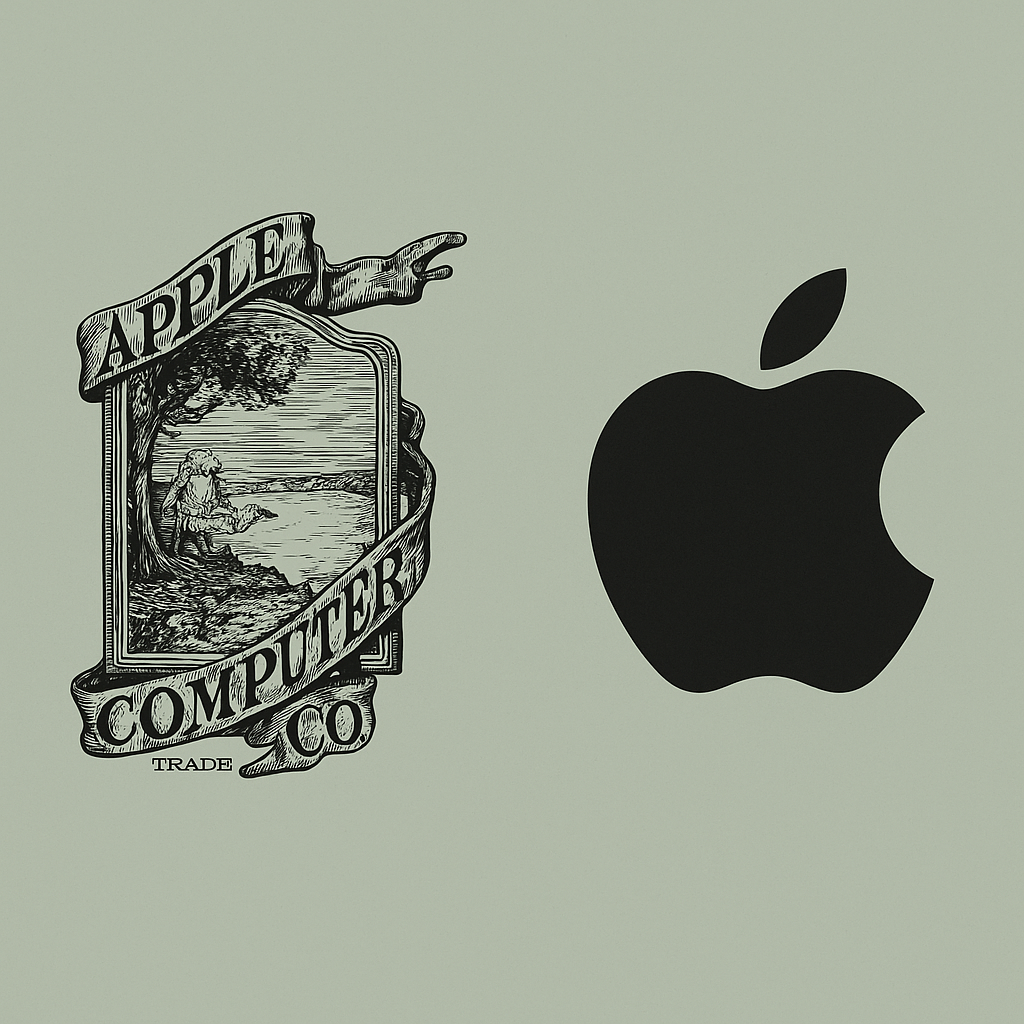
Rebranding
✨Happy New Year everyone✨
For my first post of the year, I wanted to talk about rebranding; so I will match my wish for you with the topic: May this year bring you the clarity to refine your vision, the courage to evolve and shine in a way that inspire others ❤️
So, lets talk about the hot topic of Rebranding!
Rebranding is a term that has become very common in recent years. We hear it often and read a lot about it. Although changing a brand is not something new and has been happening for decades, the spread of entrepreneurship culture and the rise of startups have made this term more popular and widely used. There are many different opinions about what rebranding really means. These differences often lead to debates, and whenever a company rebrands, it usually sparks criticism and discussion from many sides. For example, when a company changes only its logo or slogan, some people argue this isn’t rebranding at all, it’s just a visual refresh. Real rebranding happens when the deeper essence of a brand evolves. In the meantime, Muzellec has conducted several studies on rebranding, and over the past decade, many books and articles on branding and rebranding have referred to his definitions and frameworks:
Rebranding is a signal. It is a signal sent to stakeholders. The purpose of this signal is to let stakeholders know that something within the company has changed.
Rebranding can happen at three different levels:
- Product Rebranding
- SBU Rebranding (Strategic Business Unit)
- Corporate Rebranding (the entire company)
Rebranding at the product level is usually simpler, and we see many examples of it. But when rebranding happens at the SBU or corporate level, the challenges are much bigger and more complex. Muzellec points out that part of the confusion around rebranding comes from definitions. Many people think that any change in a brand’s name, logo, or slogan is rebranding. But in reality, such changes are only part of the brand’s visual identity and don’t necessarily count as rebranding.
He explains that rebranding exists on a spectrum: from small, incremental updates (called evolutionary rebranding) to deep, fundamental shifts (called revolutionary rebranding).
It’s important to note that changes in name, logo, or slogan only become true rebranding if they reflect deeper transformations happening inside the company. Otherwise, they remain surface-level updates. The very essence of branding is built on the idea that a brand’s identity and message (expressed through elements like its name, logo, or slogan) should be lasting and long-lived. That’s why rebranding, or changing these elements, must always be backed by a serious reason and strong motivation.
Otherwise, the heavy costs of rebranding cannot be justified.
What Are The Motives of Rebranding?
There are many different reasons why companies decide to rebrand. Let’s look at a few of the most common ones:
- Changes in Company Ownership: When a company is acquired by another, or when two companies merge, the parent company might decide to rebrand the acquired business. This can help unify identities under a shared vision, or signal the change clearly to the market. Of course, ownership changes don’t always require rebranding. Sometimes, maintaining the original brand is more strategic. For example, L’Oréal Group, despite owning many global brands like Kiehl’s, Yves Saint Laurent, and Vichy, has consistently kept their individual identities intact. This approach respects the heritage and brand equity these names have built over time.
- Changes in Company Strategy: A shift in company strategy is another common driver of rebranding. When a company decides to enter new markets or leave behind its traditional ones, rebranding often becomes a natural option to signal the change. One well-known example is the company Tokyo Tsushin Kogyo. When it decided to expand globally, the company rebranded itself under a new, simpler, and more international name: Sony.
- Changes in the External Environment: Sometimes, shifts in customer concerns, social expectations, or even environmental pressures can motivate a rebrand. In recent years, for example, society has increasingly expected companies to show social responsibility, especially around sustainability and protecting the environment. This has been particularly strong for brands in industries like fossil fuels. That’s why, over the past decades, we’ve seen several energy companies rebrand. A well-known case is BP (British Petroleum), which redesigned its logo to reflect a more eco-friendly and forward-looking image. McDonald’s also changed its logo to green and yellow and attempted to revise its policies to promote healthier food options.
- When We Want Others to See Us Differently: rebranding isn’t always about changing the outside (like a name, logo, or slogan). Sometimes, it’s about changing the way others perceive us, even if the essence inside remains the same. There are times when we don’t want to change ourselves, but we want the world to see us differently. In such cases, rebranding helps us adjust our external image while keeping our inner identity intact. A good example of this type of rebranding is Philip Morris, which rebranded to Altria.
The Rebranding Process
Rebranding can be broken down into three main steps. But first, you need to clarify your goal for rebranding. Generally, you have two options:
- Changing the external image of your brand: This is when you try to adjust how the outside world perceives your brand, without altering its inner identity (like the Philip Morris to Altria example).
- Changing the brand’s core identity and values: This involves a deeper transformation, where the essence of the brand itself evolves.
Once you decide which path you’re taking, you then move to the step of internalization. This means making sure your employees and partners understand and embrace the change, so they can clearly explain what has shifted and why. For small companies, these discussions and internal communications can be handled in a few meetings. But in large corporations, rebranding often requires bigger gatherings, employee workshops, and extensive communication to make sure everyone understands the purpose and motivation behind the changes.
The third step in rebranding is externalization: explaining the change to the outside world, especially to stakeholders and society. Different companies follow different policies here. Some insist on explaining every detail, including the reasons, goals, and philosophy behind the rebrand. Others prefer a softer approach: they update the name, logo, or slogan quietly, without major campaigns, letting the market discover the change gradually.
If rebranding involves fixing flaws in brand identity, the changes are usually deeper. But if the goal is only to adjust the brand’s image, then the focus is on correcting past negative perceptions without changing the core identity.
Rebranding is never cheap, it’s a significant investment. That’s why, before rebranding, companies must be able to explain the reason behind it clearly and convincingly.
Muzellec gives an insightful tip: before rebranding, ask yourself this question:
“If we don’t rebrand, what will happen?”
If your honest answer is “not much,” then perhaps rebranding isn’t necessary. Customers, the public, and the media are quick to notice when a rebrand feels forced or superficial, and the backlash can be harsh.
Ultimately, rebranding means the brand wants to distance itself from its past (or at least reshape it). If that reason isn’t strong enough, then rebranding should be avoided.
And remember:
If rebranding is truly the result of deep changes in your vision, culture, and strategy, then start with those internal transformations first. Only afterward should you change the external symbols of your brand (like the logo or slogan).
After a rebrand, audiences often look beyond surface-level changes and search for deeper reasons behind them. If they can’t find a convincing transformation, they may lose trust in your brand. That’s why it’s difficult to tell your audience afterward that the big rebrand they just witnessed was actually based on changes that happened months or even years earlier.
In short:
Focus on deep, internal change first, and let external changes follow naturally.
Many of you asked how personal brands approach rebranding. While I shared company examples, the same principles apply to personal branding. I hope they sparked ideas you can use to refresh your own brand. Wishing you all a fruitful year ahead ❤️
By
January 3, 2025
.png)
.png)



